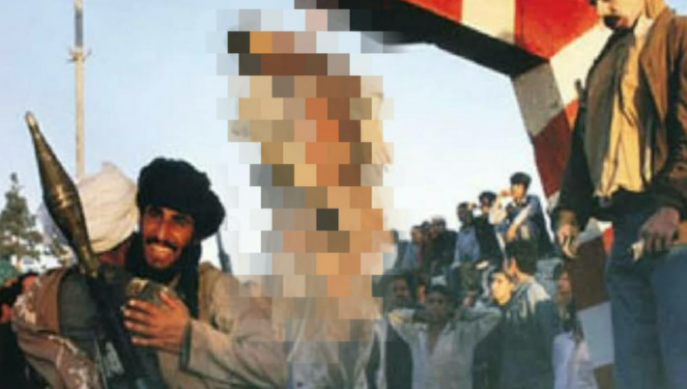Taliban killed Afghan president after seizing power first time in 1996
The Taliban abducted Mohammad Najibullah Ahmadzai from UN custody and tortured him to death, and then dragged his dead and castrated body behind a truck through the streets of Kabul

The Taliban emerged in Afghanistan partly as a response to the long war and in-fighting that had been going in the country since the late 70s.
Led by a former Mujahideen commander, Mohammad Omar, the puritanical Islamic group was augmented by volunteers from various Islamic extremist groups sheltering in Afghanistan, many of whom were Afghan-Arab holdovers from the earlier conflict. It soon controlled all but a small portion of northern Afghanistan, which was held by a loose coalition of Mujahideen forces known as the Northern Alliance. The Taliban systematically seized control of the country and occupied the capital city Kabul in 1996.
It announced about setting up an Islamic state, it also executed the then Afghan president, Mohammad Najibullah Ahmadzai , as one of the group first acts as the ruling regime.
"Students" of never ending war
An internal conflict had begun in 1978 between anticommunist Islamic guerrillas and the Afghan communist government, who were aided in 1979–89 by Soviet troops. The centrist government of Afghan President Mohammad Daud Khan was overthrown April 1978 by left-wing military officers led by Nur Mohammad Taraki. Power was thereafter shared by two Marxist-Leninist political groups, the People's (Khalq) Party and the Banner (Parcham) Party, which had earlier emerged from a single organisation, the People's Democratic Party of Afghanistan, and had reunited in an uneasy coalition shortly before the coup.

The new Afghan government, which had little popular support, forged close ties with the Soviet Union, launched ruthless purges of all domestic opposition, and began extensive land and social reforms that were bitterly resented by the devoutly Muslim and largely anticommunist population. Insurgencies arose against the government among both tribal and urban groups, and all of these—known collectively as the Mujahideen, who were Islamic in orientation. These uprisings, along with internal fighting and coups within the government between the People's and Banner factions, prompted the Soviets to invade the country in December 1979, sending in some 30,000 troops and toppling the short-lived presidency of People's leader Hafizullah Amin.
The aim of the Soviet operation was to prop up their new but faltering client state, now headed by Banner leader Babrak Karmal, but the Mujahideen rebellion grew in response, spreading to all parts of the country. The Soviets initially left the suppression of the rebellion to the Afghan army, but the latter was beset by mass desertions and remained largely ineffective throughout the war.
The war in Afghanistan became a quagmire for what by the late 1980s was a disintegrating Soviet Union. In 1988 the United States, Pakistan, Afghanistan, and the Soviet Union signed an agreement by which the latter would withdraw its troops and Afghanistan returned to nonaligned status. In April 1992 various rebel groups, together with newly rebellious government troops, stormed the besieged capital of Kabul and overthrew the communist president, Mohammad Najibullah Ahmadzai, who had succeeded Karmal in 1986.

A transitional government, sponsored by various rebel factions, proclaimed an Islamic republic, but jubilation was short-lived. President Burhanuddin Rabbani, leader of the Islamic Society, a major Mujahideen group, refused to leave office in accordance with the power-sharing arrangement reached by the new government. Other Mujahideen groups, particularly the Islamic Party, led by Gulbuddin Hekmatyar, surrounded Kabul and began to barrage the city with artillery and rockets. These attacks continued intermittently over the next several years as the countryside outside Kabul slipped into chaos.
Enters new regime, executes the old
President Najibullah was ousted on 15 April, 1992, when the Islamic Mujahideen guerrilla forces closed in on Kabul after 14 years of civil war against a Soviet-backed communist government. Not long before Kabul's fall, Najibullah appealed to the UN for amnesty, which he was granted. However, his attempt to flee to the airport was thwarted by troops of Abdul Rashid Dostum - once loyal to him, but now allied with Ahmad Shah Massoud - who controlled the airport.
After all of his attempts to leave the country failed, Najibullah eventually sought haven in the local UN headquarters, where he would stay until 1996. Najibullah was at the UN compound when the Taliban soldiers came for him on the evening of 26 September 1996. The Taliban abducted him from UN custody and tortured him to death, and then dragged his dead and castrated body behind a truck through the streets of Kabul. His brother, Shahpur Ahmadzai, was given the same treatment.

Najibullah and Shahpur's bodies were hanged from a traffic light pole outside the Arg presidential palace the next day in order to show the public that a new era had begun. The Taliban prevented Islamic funeral prayers for Najibullah and Shahpur in Kabul, but the bodies were later handed over to the International Committee of the Red Cross who in turn sent their bodies to Gardez in Paktia Province, where both of them were buried after the Islamic funeral prayers for them by their fellow Ahmadzai tribesmen.
"We killed him because he was the murderer of our people," said Noor Hakmal, a Taliban commander who entered the city overnight from Charasyab, south of Kabul.



 Keep updated, follow The Business Standard's Google news channel
Keep updated, follow The Business Standard's Google news channel
















